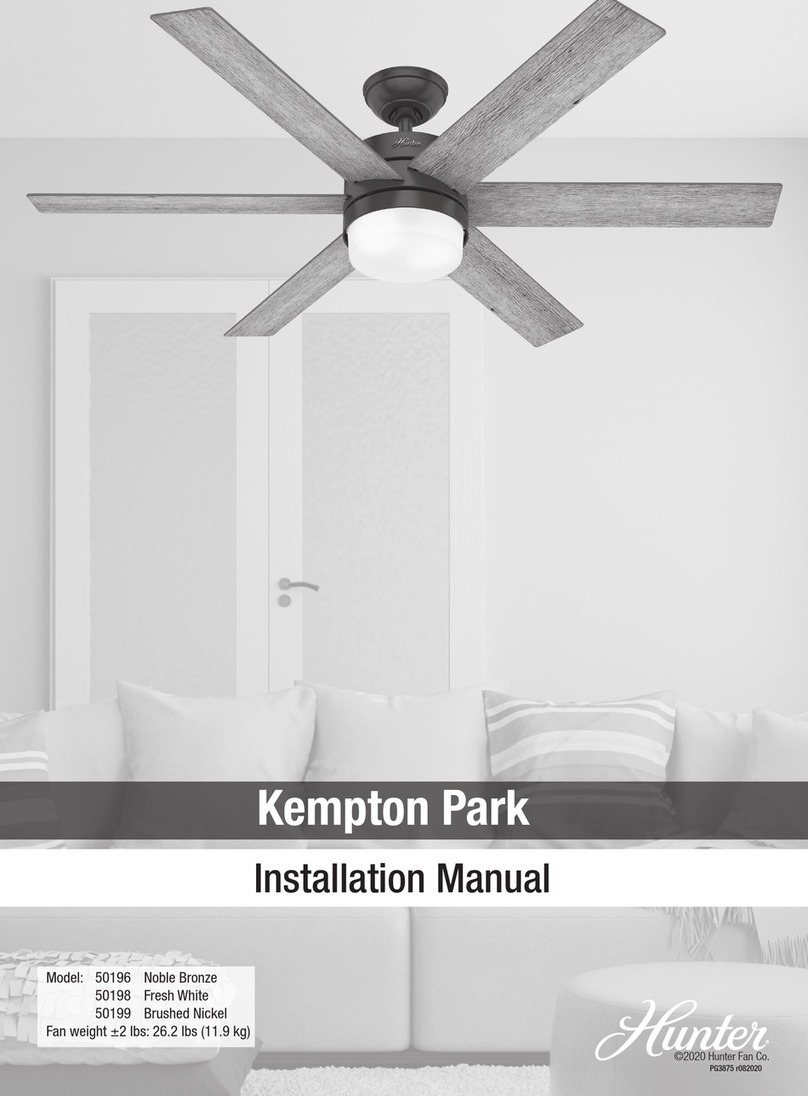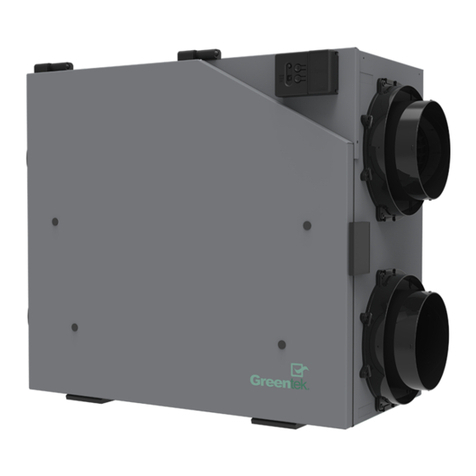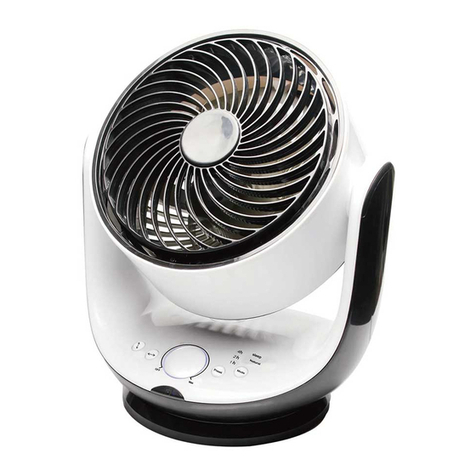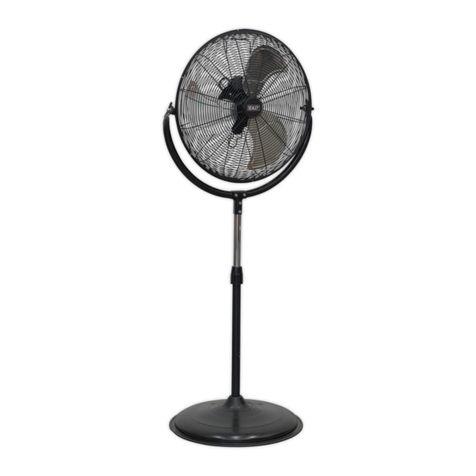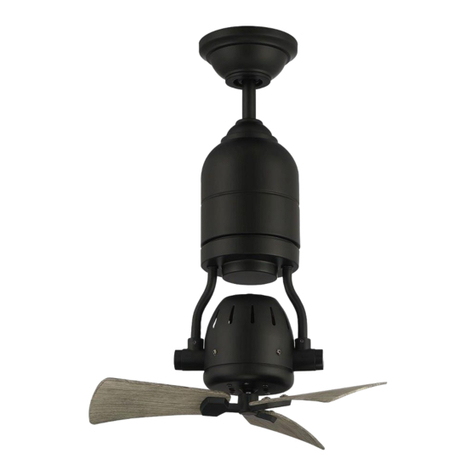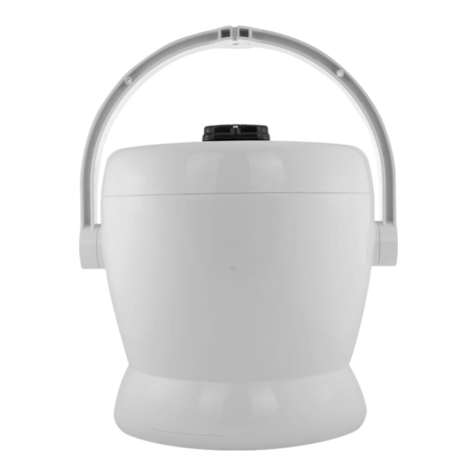Engineered Comfort 39VH Series User manual

Engineered Comfort reserves the right to change any information concerning product or specification without notice or obligation.
Dimensions are in inches (mm).
2/17/09 EC-39INST Page 1 of 6
INSTALLATION AND OPERATION MANUAL
VERTICAL HI-RISE FAN COIL UNITS
MODEL SERIES: 39VH AND 39L
Safety Considerations
The equipment covered by this manual is designed for safe and
reliable operation within its design specification limits. To avoid
personal injury or damage to equipment or property while installing
or operating this equipment, it is essential that qualified, experienced
personnel perform these functions using good judgment and safe
practices. See the following cautionary statements.
Danger
ELECTRICAL SHOCK HAZARDS. All power must be disconnected
prior to installation and servicing this equipment. There may be
more than one power source present. Insure that all power sources
have been disconnected to avoid electrocution or shock injuries.
MOVING PARTS HAZARD. Motor and blower must be disconnected
prior to opening access panels. Motors can start automatically;
disconnect all power and control circuits prior to servicing to avoid
serious crushing or dismemberment injuries.
BURN HAZARD. Electrical resistance heating elements must
be disconnected prior to servicing. Electric heaters may start
automatically; disconnect all power and control circuits prior to
servicing to avoid burns.
Warning
Ensure that rigging and lifting equipment are of sufficient capacity to
support the weight of the unit.
All assemblies must be secured during lifting and rigging with
temporary supports and restraints of adequate size and strength
according to local codes and ordinances until the equipment is
permanently fixed in place.
All fastening devices must be capable of locking the assembly in
place without loosening or breaking away due to system operation
and vibration.
Nailor tests all risers and coil packages to 400PSI for leaks before
shipping. However, during transit, vibration may cause loosening
of connections. Therefore, all connections must be checked at
time of installation. Any connection found to be loose must be
tightened. Nailor will not be held responsible or accept any charges
for tightening loose fittings. Backup wrenches must be used during
the tightening process.
Should a hose swivel connection be disconnected after it has been
tightened the gasket must be checked to see if it needs replacement
and replaced, if necessary, before the hose is re-attached.
Female swivel fittings with gasket should not be tightened to more
than 30 in-lb of torque.
Unit must be pressure tested before applying water.
Backup wrenches must be used during any tightening process to
keep the copper tube or fitting from being damaged.
Nailor will not accept any responsibility for improper tightening
procedures that damage the connections.
FLOOR
1) The Vertical
Hi-Rise Fan Coil
Unit is lifted into
place directly
above the unit on
the floor below.
2) This unit has
been set in place
and ready to
receive the unit
above.
3) The top unit
risers slip into
the "swaged"
sleeves on the
risers of the units
below. The pipes
are then brazed
together.
4) This procedure is
duplicated from
floor to floor until
the installation is
complete.
Figure 1. Stacking Assembly

Engineered Comfort reserves the right to change any information concerning product or specification without notice or obligation.
Dimensions are in inches (mm).
Page 2 of 6 2/17/09 EC-39INST
Caution
Secure all dampers when servicing damper, actuator or linkages.
Dampers may activate automatically; disconnect control circuits or
pneumatic control systems to avoid injury.
Protect adjacent flammable materials when brazing. Use flame and
heat protection barriers where needed. Have a fire extinguisher
available and ready for immediate use.
The equipment covered by this manual is available with a variety of
options and accessories. Consult the approved unit submittal, order
acknowledgement and other manuals for details on the options and
accessories provided with the equipment on each project.
Safe practices regarding mechanical equipment must be followed at
all times when handling, installing or servicing any unit.
All power must be disconnected before any installation or service
should be attempted. More than one power source may be supplied
to the unit. Power to remote mounted control devices may not be
supplied through the unit.
Never wear bulky or loose fitting clothing when working with
mechanical equipment. Gloves should only be worn when required
for proper protection from heat or other possible injury. Safety
glasses or goggles should always be worn when drilling, cutting or
working with chemicals such as lubricants
Never pressurize any equipment beyond specified test pressures.
The manufacturer assumes no responsibility for personal injury or
property damage resulting from improper or unsafe practices during
handling service or operation of any equipment.
Preface
Nailor Industries fan coils represent an investment, which can, when
installed and operated properly, give long and trouble free service.
Your equipment is initially protected under the manufacturer’s
standard warranty. However, this warranty is provided under the
condition that the steps outlined in this manual for initial inspection,
proper installation, periodic maintenance and everyday operation
of the equipment be followed in detail. This manual should be
fully reviewed in advance of any actual work being done on the
equipment. Should any questions arise, please contact your local
Sales Representative or the factory BEFORE proceeding.
Unpacking and Inspection
All units have been carefully inspected, tested and packaged at
Nailor’s manufacturing facility.
It is the responsibility of the receiving party to inspect the equipment
upon arrival. Any obvious damage to the packaging and/or its
contents should be recorded on the bill of lading and a claim should
be filed with the freight carrier.
After determining the condition of the unit’s exterior, including all
piping, each unit should be carefully removed from the package
and inspected for hidden damage. Any hidden damage should be
recorded and immediately reported to the carrier and a claim filed
as before. Should a claim for shipping damage be filed, the unit, the
shipping package and all packing must be retained for inspection
by the freight carrier. All equipment should be stored in the factory
shipping package until installation.
At the time of receipt, the equipment type and arrangement should
be verified against the order documents. Should any discrepancy be
found the local sales rep should be notified immediately so that the
proper action may be instituted. The factory must be notified about
any questions concerning warranty repairs BEFORE any corrective
action is taken. Should equipment require factory operations a
Return Authorization Number will be issued. Any returns not marked
with an authorization number will be refused. The manufacturer will
not accept claims for expenses not authorized.
Ship Loose Items
Several items are shipped loose for field installation. These items
are shipped loose to offer protection against shipping and job site
damage or by customer request. Refer to packing slip. These items
require the same inspection as the unit.
Handling & Installation
Even though the Nailor hi-rise unit is a sturdily constructed unit
both in appearance and in fact, great care should be taken when
handling it.
Care should be taken to protect the coil, risers, piping, and drain
stub outs during handling. None of the piping should be used as
handles for lifting or moving the unit. Units may also have delicate
internal components that could be damaged by improper handling.
Wherever possible the units should be maintained in an upright
position and handled by the exterior casing. Care should be taken
to prevent impact forces on the unit that may cause internal damage
The units covered in this manual are not suitable for outdoor
installation and should never be used for that purpose. The units
and risers should never be stored or installed where they may be
subjected to a harsh environment such as rain, snow, or extreme
temperatures
Care should be taken to prevent any foreign materials from being
deposited in the risers, the space between the risers and the
insulation, drain pan, heater, or motor and blower wheels of the unit.
To prevent contamination, the units and risers should have some
form of temporary covering placed over them during construction.
When installed the unit should be plumbed in two directions using
the unit frame as a reference. Care should be taken that the internal
components of the unit are not damaged while using bolts or lag
screws to anchor unit to the building.
After unit is mounted, the service connections such as water, drain
and electrical can be made. At this time it should be confirmed that
the proper types of services have been provided to the unit. The
water connections should be checked for line size, temperature,
and location. Electrical service to the unit should be compared to
the unit nameplate to verify compatibility.
The routing, and sizing of all piping, the type and sizing of all
wiring and other electrical components such as circuit breakers,
disconnects switches, etc. should be determined by the individual
job requirements and should not be based on the size or type
connections provided with the equipment. All installations should
be made in compliance with all governing codes and ordinances.
This compliance to all codes is the responsibility of the installing
contractor.
Riser Precautions
WARNING: Should water, especially run-off water from the
construction site, be allowed to enter the space between the
insulation and the copper or the copper pipe itself, it is possible
that the combination of water and certain chemicals like ammonia,
nitrates or nitrites could cause stress corrosion cracking, which
may cause catastrophic failure of the pipe. For more information on
stress corrosion cracking in copper pipes, "google" stress corrosion
cracking and copper pipe.
Caution should be exercised to protect the risers from damage
and adverse conditions during the construction phase. During
the installation phase of the riser chase at the floor opening, it is
recommended that a guard be constructed and installed around
the opening to prevent foreign material, rain and/or snow from

Engineered Comfort reserves the right to change any information concerning product or specification without notice or obligation.
Dimensions are in inches (mm).
Page 3 of 6
2/17/09 EC-39INST
accumulating in the riser and riser insulation. This guard should
be installed on every floor penetration. An example of the guard is
shown in Figure 2.
When the risers from floor to floor are installed, the copper risers
from the above stacked unit will slip into the expanded copper
risers from the unit below. After the brazing process at this joint
is completed, the bare copper at these joints must be insulated
immediately with approved adhesive. If insulating immediately is
not possible, adequately protect the area to avoid foreign material,
including water or snow, from entering the space between the
insulation and copper. If charring or overheating of insulation
occurs during the brazing process, replace insulation to a distance
sufficient to remove the affected area. Armacell suggest that a dam
be created at least every 12 to 18 feet of riser to keep any water
migration inside the insulation to a minimum should one section of
insulation become damaged during construction.
Failure to comply with these instructions could result in catastrophic
failure of the pipe.
Cooling/Heating Connections
CAUTION: Toxic residues and loose particles resulting from
manufacturing and field piping techniques may be present in the
unit and piping system.
Special consideration must be given to system cleanliness if unit is
to be connected to solar, domestic or potable water systems.
Submittals and Product Catalogs detailing unit operation, controls
and connections should be thoroughly reviewed BEFORE beginning
the connection of the various cooling and/or heating mediums to the
unit.
All accessory valve packages should be installed as required, and
all service valves should be checked for proper operation.
In cases where control valves are field installed care should be
taken to ensure the valve body is not overheated when braze
connections are made.
All pipe screw connections must be made using a "backup wrench"
to ensure the copper tube is not twisted during the tightening
sequence. If unions are used, over tightening should be avoided
to prevent distortion to the union seal surfaces and destroying the
union.
Flex Hose
Nailor Industries uses Kevlar®reinforced braided stainless steel
hoses for all water pipe connections between the risers and the unit.
All supply and return risers are supplied with a ball valve (ball valve
is available with memory stop). The ball valve is attached to the riser
by a female pipe thread connection. All factory-supplied connections
are tested, with air, to 400 PSIG during the manufacturing process.
During transit vibration may cause loosening of connections
therefore all connections should be checked at time of installation.
Refer back to the warning on page 1 for further details.
Field Supplied Risers
On units with field-supplied risers, the ball valve must be connected
to the riser prior to connecting the hose to the unit. All standard
tapered pipe thread joints must be have either Teflon®tape or a
polyester pipe dope such as Rectorseal T+2®applied to them.
Gaskets will be shipped with the unit hose assembly and must be
installed before hose swivel connection is attached to the unit.
Riser Connection
Risers will not be rigidly connected to the equipment after
installation. Risers must be free to move with thermal expansion
and contraction. Risers should accommodate as a minimum ± 1"
of vertical expansion/contraction. If total combined riser expansion/
contraction exceeds 3" additional expansion loops or joints must be
field supplied and installed. Remove riser-shipping straps prior to
unit start up. Any building structure variation that necessitates the
modification of the risers is the responsibility of the installer. All riser
fire blocking is the responsibility of the installer.
In the case of field installation of chilled water valves and piping the
chilled water valve cluster and riser pipe should be installed so that
any dripping or sweating is contained in the drain pan.
After all connections have been made, and prior to furring in, the
system should be pressure tested for leaks.
CAUTION: Maximum unit operating pressure is 350 PSIG.
CAUTION: All water coils must be protected from freezing after
initial water fill. Even if the system is drained unit coils may still
retain enough water to cause damage if exposed to temperatures
below freezing.
In the event that any defective components are discovered the sales
representative must be notified before any repairs are attempted.
When the system integrity has been established all of the piping
must be insulated. This includes any valves not located over the
drain pan. The drainpipe should be connected to an acceptable
disposal point. A drain trap is an integral part of the unit and it is
strongly recommended to prevent odor contamination.
Ductwork Connections
All ductwork and/or return grills should be installed in accordance
with the project plans and specifications.
All units must be installed in a non-hazardous area. Zero clearance
to combustible materials is allowed.
Units provided with outside air ventilation should have some form
of low temperature protection to prevent coil freeze up. The safest
method being the use of glycol in the proper percent solution for the
coldest expected air temperature.
The manufacturer assumes no responsibility for undesirable system
operation due to improper field design, equipment or component
selection, and/or installation of ductwork, grills, and other related
components.
FLOOR
CONCRETE
FASTENERS
SEAL FOUR
CORNERS
WITH CAULK
APPLY A GENEROUS
BEAD OF CAULK
UNDERNEATH THE
ANGLES TO FULLY
SEAL GUARD
Figure 2. Riser Guard Detail

Engineered Comfort reserves the right to change any information concerning product or specification without notice or obligation.
Dimensions are in inches (mm).
2/17/09 EC-39INST
Page 4 of 6
Wall Framing
Wall framing is the responsibility of others.
Units are designed for field mounting a drywall enclosure around
them. Care must be taken when fastening drywall to the unit.
1. Do not locate screws, nails, or mechanical fasteners where they
can penetrate coils, risers, piping, electrical enclosures of other
components.
2. Do not apply drywall or framing to drain pans.
3. Do not apply drywall to electrical enclosures.
4. Do not apply drywall to removable panels.
Outside Air Connection
Outside air connections will be provided as per customer
specification.
Vapor barriers or freeze control devices for outside air connections
are the responsibility of the installer.
Electrical Connections -
Caution: Electrical Shock/Hazard
The unit nameplate lists the unit electrical characteristics such
as the required voltage, fan and heater amperage, and required
circuit ampacity. The unit-wiring diagram shows all unit and field
wiring. Because each project can be different and each unit on a
project may be different the installer must be familiar with the wiring
diagram and nameplate on the unit before beginning any wiring.
An adequately sized fuse, circuit breaker, or disconnect that meets
local and national electric codes must be supplied. All electrical
connections should be checked for tightness before startup.
All field-installed components should be located and checked for
proper function and compatibility. All internal components should be
checked for shipping damage and any loose connections should be
tightened to prevent any problems during startup.
Any devices furnished by the factory for field installation must be
wired in strict accordance with the applicable wiring diagrams.
Failure to due so could result in personnel injury, or damage to the
equipment and will void all manufacturers’ warranties.
Thermostats
Thermostats will be provided per customer request. Unit mounted
thermostats will be furnished with a dry wall mud ring.
The manufacturer assumes no responsibility for any injury or
damage resulting from the improper field installation of any
components.
Any modification to the unit without written factory authorization
will result in voiding all factory warranty and will nullify any agency
listings.
Start Up
General
Before beginning any start up operation all start up personnel
should familiarize themselves with the unit options, accessories,
and control sequence to understand the proper system operation.
All personnel should have a good working knowledge of the general
start up procedures along with the appropriate start-up guides and
balancing guides available.
The building must be completely finished with all doors, windows,
interior walls and insulation in place. The entire building should be
as complete as possible before beginning any system balance.
Before any start up operations occur a final visual inspection should
be made of the system. Once it has been established that the
installation is correct, complete, and no foreign articles have been
left in the units or other areas the start up procedure can begin.
Cooling/Heating System
Before the water system is started and balanced the chill/hot water
systems should be flushed to remove any contaminant that might
collected in the system during construction. All unit service valves
must be in the closed position during this operation to keep foreign
matter from entering the unit and clogging the valves. Strainers
should be installed in the piping mains to prevent this material from
entering the units while they are operating.
During the filling of the system the vent valve on top of the coil
should be turned clockwise one and one-half turns so any trapped
air in the coil can escape.
CAUTION: The coil air vents are not to be used to bleed the entire
system. The main piping must have air vents installed in it where
potential air traps could be located.
Some systems may require repeated venting over a period of time
to properly eliminate air from the system.
CAUTION: Do not exceed 350 PSIG operating pressure.
Air System Balancing
All ductwork must be complete and connected, all grilles, filters,
access doors and panels must be properly installed to establish
system operating conditions BEFORE beginning air balancing
operations. Balance specialists who are familiar with all procedures
required to establish air distribution and fan system operating
conditions should do the air balancing. Exposed units with no
ductwork do not require air balancing other than selecting the
desired fan speed. After proper system operation has been
established the actual air delivery and motor amp draw should be
recorded for future reference.
Fan Adjustment
Before starting the fan motor, make sure duct system is free of
foreign objects, and filters are installed where required.
(1) Start motor and let it run-in at least 15 minutes. During run-in,
check ductwork connections for leaks and repair if necessary.
(2) These units are equipped with ECM motors. Set the fan as
described on the ECM MOTORS IOM, page 1.
Water System Balancing
Only qualified personnel with a complete knowledge of hydronic
systems, their components, and the controls essential to proper
water balancing should attempt to balance these systems. All
components must be in operating condition BEFORE attempting to
balance the system.
Every hydronic system has different operating characteristic
depending on the devices and controls in the system. The actual
balancing technique may vary from one system to the next due to
these differences.
After establishing the proper system operation the appropriate
system operating conditions should be recorded for future reference.
Controls Operation
All other systems should be operating properly before the controls
function is tested.
Approved unit submittals, order acknowledgement, and other
manuals should be consulted for detailed information regarding
each individual unit and its controls. Care should be taken that
the correct control procedures have been identified for the unit
in question before any attempt is made to adjust the control
sequence. For specific information on controls provided by other
manufacturers contact the manufacturers local or national office.
This applies whether the controls are factory or field mounted.

Engineered Comfort reserves the right to change any information concerning product or specification without notice or obligation.
Dimensions are in inches (mm).
2/17/09 EC-39INST Page 5 of 6
Normal Operation & Periodic Maintenance
General
Each unit on a job will have it’s own unique operating environment
and conditions that will dictate the maintenance schedule for that
unit. A formal schedule and maintenance log and an individual
unit log should be established and maintained to establish max
performance and service life.
Information regarding safety precautions contained in the preface at
the beginning of this manual should be followed during any service
and maintenance operations.
Motor Blower Assembly
Nailor uses permanently lubricated ECM motors to ensure a long
trouble free blower life. However, should it become necessary, the
blower assemblies in these units are easily removable. Before the
blower assembly can be slid from the unit, the wiring harnesses
between the motor and the unit must be unplugged.
To remove the assembly, first remove the two sheet metal screws
securing the blower assembly. Next, slide the blower assembly out
the front of the unit. To reinstall the blower assembly repeat the
removal sequence in reverse order, making sure to reconnect all
wiring harnesses.
Dirt and dust should not be allowed to accumulate on the blower
wheel or housing. This can result in an unbalanced blower wheel
and damage the wheel or motor. The wheel can be cleaned
periodically with a vacuum cleaner and brush.
Maintenance Procedures
If fan motor does not run, do the following:
a. Check for free rotation of blower wheel. Make sure no foreign
objects are in fan. Look for signs of freight or job site damage.
b. Check power supply. Disconnects should be in the "ON"
position.
Optional fusing should also be inspected. Check transformer for
proper output.
c. Check for proper control signals and fan relay function.
Fan motor runs but emits excessive noise:
a. Maximum airflow may be too high, or discharge static pressure
may be incorrect.
b. Blower may have clearance problems. Make sure all components
are securely attached.
c. Verify integrity of ductwork. Leaks or loose connections could
cause noise. Check for rattling diffusers or rattling or incorrectly
adjusted balancing dampers.
Fan motor runs, but airflow too low:
a. May be due to ductwork restrictions, dirty air filters,or clogged
water coils.
b. Readjust fan speed control.
c. Discharge static pressure may be incorrect.
Coil
Coils may be cleaned by brushing the coil face with a soft brush.
The brush strokes should be in the direction of the fin never across
the fin. Cleaning with a vacuum cleaner should follow this. If
compressed air is available the coil may be cleaned by blowing air
through the coil from the leaving airside. Vacuuming should follow
this procedure also. Even coils that have the filter changed on a
regular basis still require cleaning periodically.
Electric Resistance Heater Assembly
Electric resistance heaters typically require no normal periodic
maintenance when unit air filters are changed properly. The two
most important operating conditions for an electric heater are,
proper air flow, and proper supply voltage. High supply voltage or
insufficient airflow will cause the heater strips to cycle on the high
side. The strip heaters are equipped with automatic reset switches
to prevent overheating of the unit. Once the switches are tripped the
heater will remain off until it cools past the lower set point for the trip
switches to reset. If the trip switches actuate, the system should be
checked and any problem found corrected.
Electrical Wiring and Controls
The electrical operation of each unit is determined by the
components and wiring of the unit and may vary from unit to unit.
The wiring diagram for the unit in question should be consulted
before attempting any repairs to the unit. When replacing any
component such as fuses, contactors, or relays, the exact type, size
and voltage should be used. All repair work must be done in such a
manner as to maintain the equipment in compliance with governing
codes and ordinances or testing agency listings. Any deviation will
void all factory warranty.
The integrity of all electrical components should be verified at least
twice during the first year of operation. Afterwards, all controls
should be inspected regularly for proper operation.
Valves and Piping
Valves and piping require no formal maintenance. Inspection
should be made for possible leaks during the course of normal
maintenance. Should a valve require replacement care should be
taken to keep the valve cool during the brazing process.
Filters, Throwaway
The throwaway filters used on a fan coil should be replaced on a
regular basis. A log should show the time between filter changes so
a maintenance schedule for changing the filters can be established.
Drain
The drain should be checked for blockage at the initial start up of
the unit and every year at the beginning of the cooling season. If
clogging is discovered steps must be taken to clear it before the
unit is started.
Periodic checks should be made during the cooling season to
maintain free flowing condensate. Should algae and/or bacteria
be a concern a local air conditioning and refrigeration supply
organization familiar with local conditions should be consulted for
what chemicals are available to control these agents.
Replacement Parts
Factory replacement parts should be used wherever possible to
maintain the unit performance, operating characteristics, and testing
agency listings. Replacement parts can be purchased through the
local Sales Representative. Any modification not authorized by the
factory could result in personal injury, damage to the unit and will
void all factory warranties.
When ordering parts the following information is required to ensure
proper part identification:
1) Complete unit model number.
2) Unit hand connection (right or left hand). Hand is decided by
standing in the entry air stream with the air striking the back of the head
.
3) Complete part description including any numbers available on
the part.
4) The SO# that appears on the nameplate label.
Any unit returned to the factory MUST have a Return Authorization
Number, provided by the factory, marked on it.
All equipment and components sold as replacement parts or
sent as a warranty part are warranted for 12 months from the
date they leave the factory.

Dimensions are in inches (mm).
Fan Coil Units www.engineered-comfort.com
Houston, Texas
Tel: 281-590-1172
Fax: 281-590-3086
Toronto, Canada
Tel: 416-742-5515
Fax: 416-736-4262
Page 6 of 6 2/17/09 EC-39INST
Model
Series
Unit
Size
Standard Return Air Filters Filters For Filter Grille Options
Nom.
Filter Size
Throwaway
Part No.
Merv. 7
Part No.
Nom.
Filter Size
Throwaway
Part No.
Merv. 7
Part No.
39VH,
39L
3, 5, 6 13 1/8 x 16 3/4 (333 x 425) VH1-1842 VH1-1352 14 x 14 (356 x 356) VHI-2000 VH1-1996
8, 10 15 1/2 x 24 (394 x 610) VH1-1843 VH1-1230 16 x 20 (406 x 508) VHI-2001 VH1-1997
12, 15 18 1/2 x 29 (470 x 737) VH1-1969 VH1-1967 20 x 25 (508 x 635) VHI-2002 VH1-1998
19, 21 24 1/2 x 29 (622 x 737) VH1-1970 VH1-1968 25 x 25 (635 x 635) VHI-2003 VH1-1999
Fan Relays Part No. Airflow
Switch
Part
No.
P.E.
Switch
Part
No.
Fan Motor
Fuses
Part
No.
1 Pole, 24V H1-666 AFS VH1-1842 Switch, P-E H1-539 250V, 15A VH1-320
AFS Probe, 4" VH1-242 250V, 20A VH1-321
AFS Probe, 8" VH1-245 600V, 15A VH1-329
600V, 3A VH1-0011
600V, 5A VH1-965
600V, 8A VH1-967
Door Disconnect
Switch Part No. Disconnect
Switch
Part
No. Transformers Part
No.
3P, 25A, 600V VH1-204 Toggle, 1P, 16A, 600V VH1-212 208/240/24V, 50VA VH1-685
3P, 60A, 600V VH1-205A Toggle, 3P, 40A, 600V VH1-211 277/24V, 40VA/50VA/75VA VH1-675/674/677
Toggle, 3P, 60A, 600V VH1-213 346/24V, 40VA/50VA/75VA H1-992/991/993
480/24V, 50VA VH1-686
120/208/240/480V, 75VA VH1-689
120/24V, 40/50VA VH1-669/692
Model
Series
Unit
Size
PSC Motor GE Blower
Assembly Part No.
HP 120V
Part No.
208 - 203V
Part No.
277V
Part No.
39VH,
39L
3, 5 1/10 VH1-1806 VH1-1807 VH1-1808 VH1-1809 (Size 3), VH1-902A (Size 5)
6, 8 1/6 VH1-1806A VH1-1807A VH1-1808A VH1-900Z (Size 6), VH1-1983 (Size 8)
10, 12 1/3 VH1-1806C VH1-1807C VH1-1808C VH1-904 (Size 10), VH1-1338 (Size 12)
15 1/2 VH1-1806D VH1-1807D VH1-1808D VH1-1925
19, 21 3/4 VH1-1806E VH1-1807E VH1-1808E VH1-1926 (Size 19), VH1-1925 (Size 21)
Model
Series
Unit
Size
ECM MOTOR GE Blower
Assembly Part No.
HP 120/208/240V
Part No.
277V
Part No.
39VH,
39L
6 1/3 VH1-0046B VH1-0045B VH1-900
10 1/2 VH1-0046A VH1-0046 VH1-904
15 3/4 VH1-0045A VH1-0045 VH1-904
19 1 VH1-0046E VH1-0045E VH1-904
Replacement Parts List
This manual suits for next models
1
Table of contents
Popular Fan manuals by other brands
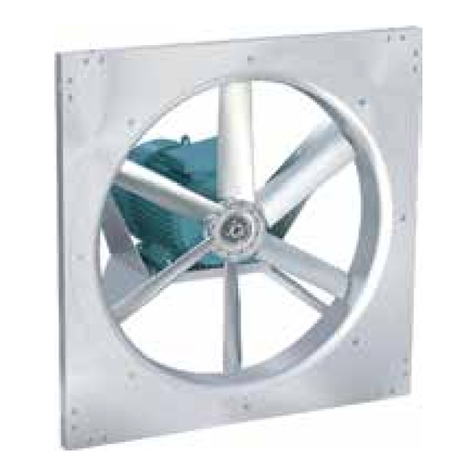
Greenheck
Greenheck AER-M Installation, operation and maintenance manual
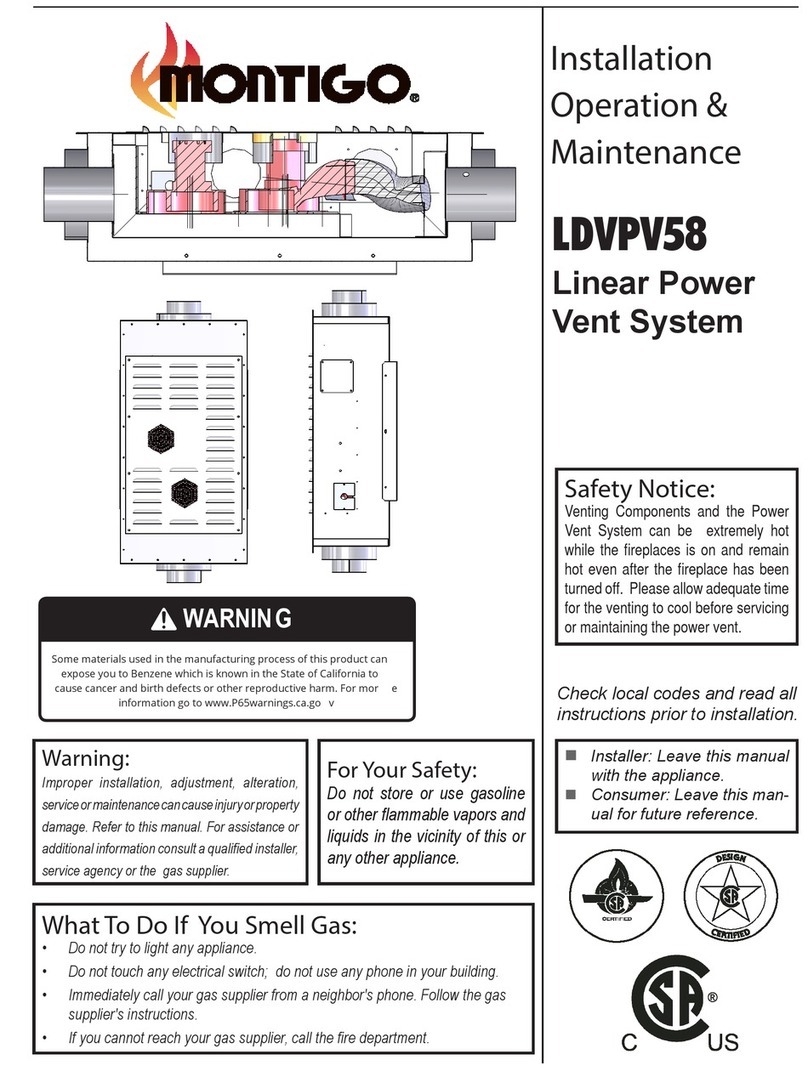
Montigo
Montigo LDVPV58 Installation operation & maintenance
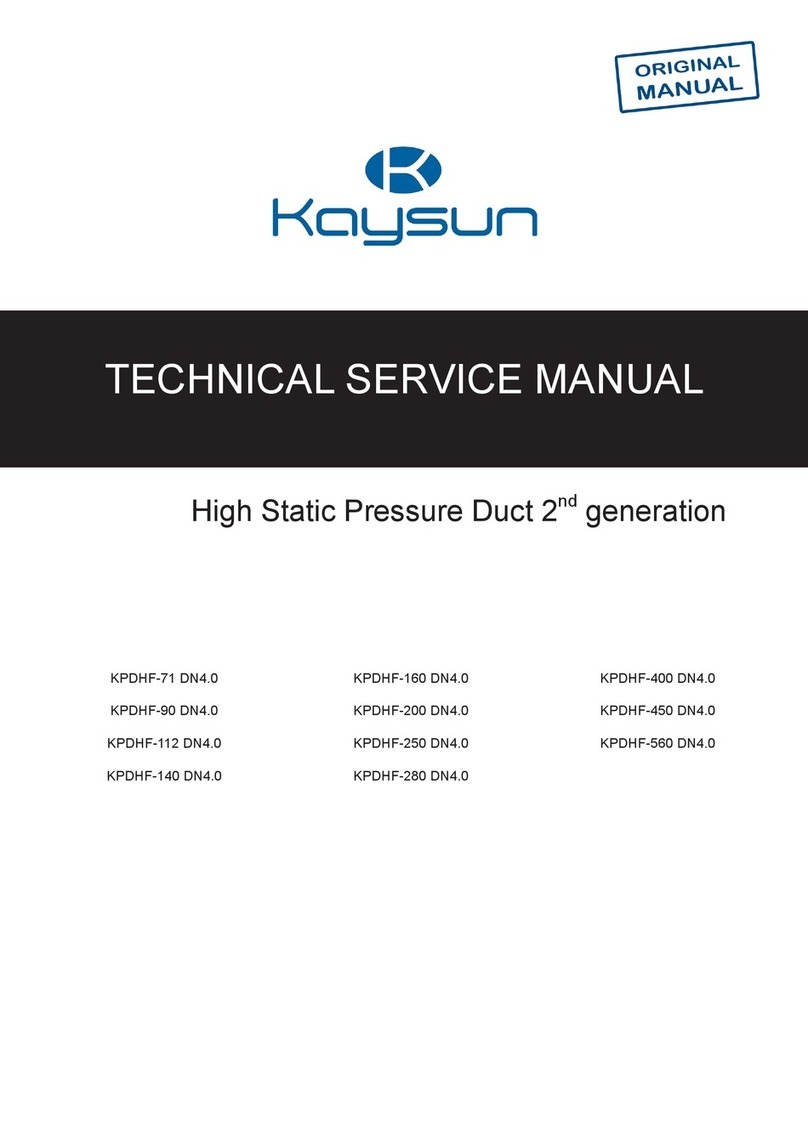
Frigicoll
Frigicoll Kaysun KPDHF-71 DN4.0 Technical & service manual
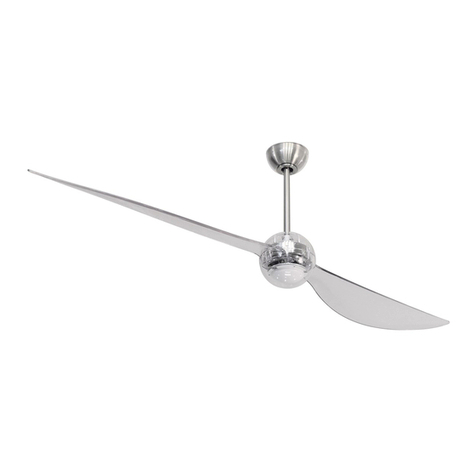
Craftmade
Craftmade Wisp WSP70 installation guide
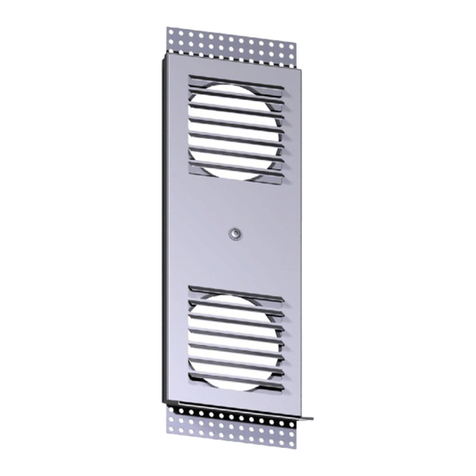
Meltem
Meltem M-WRG-ES installation manual
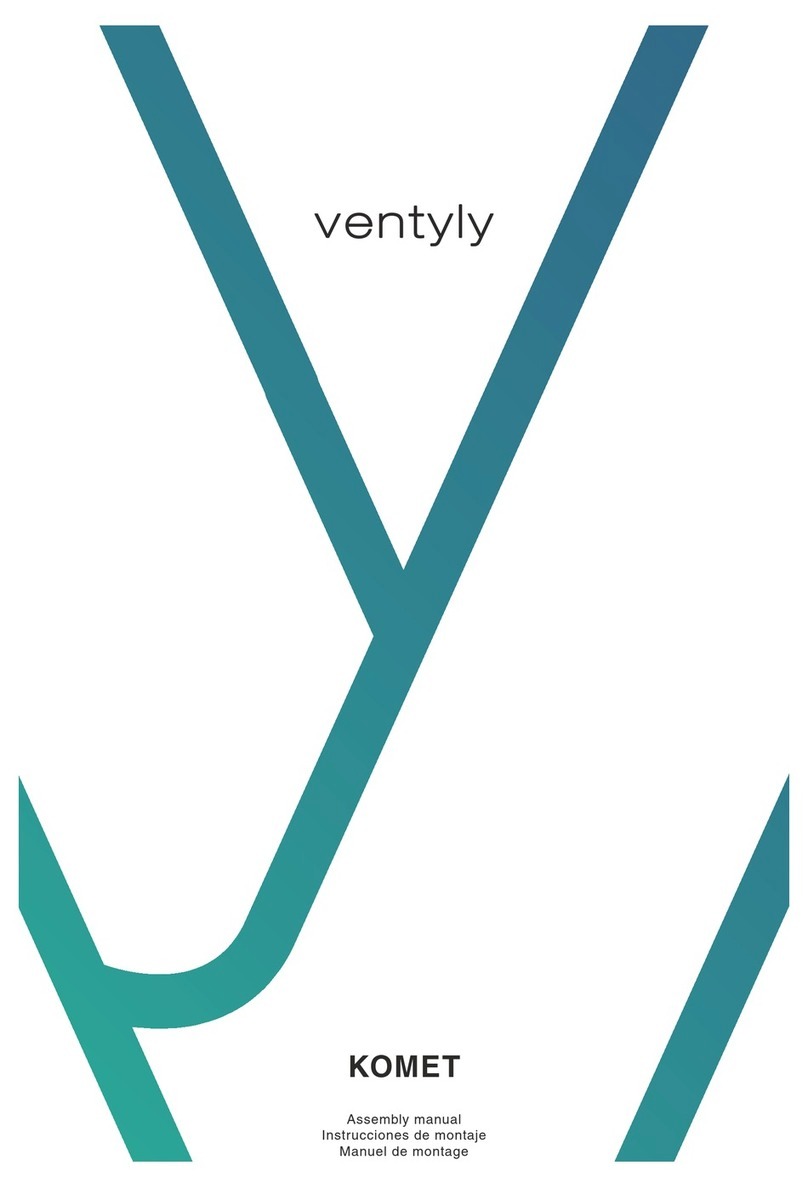
ventyly
ventyly KOMET Assembly manual
